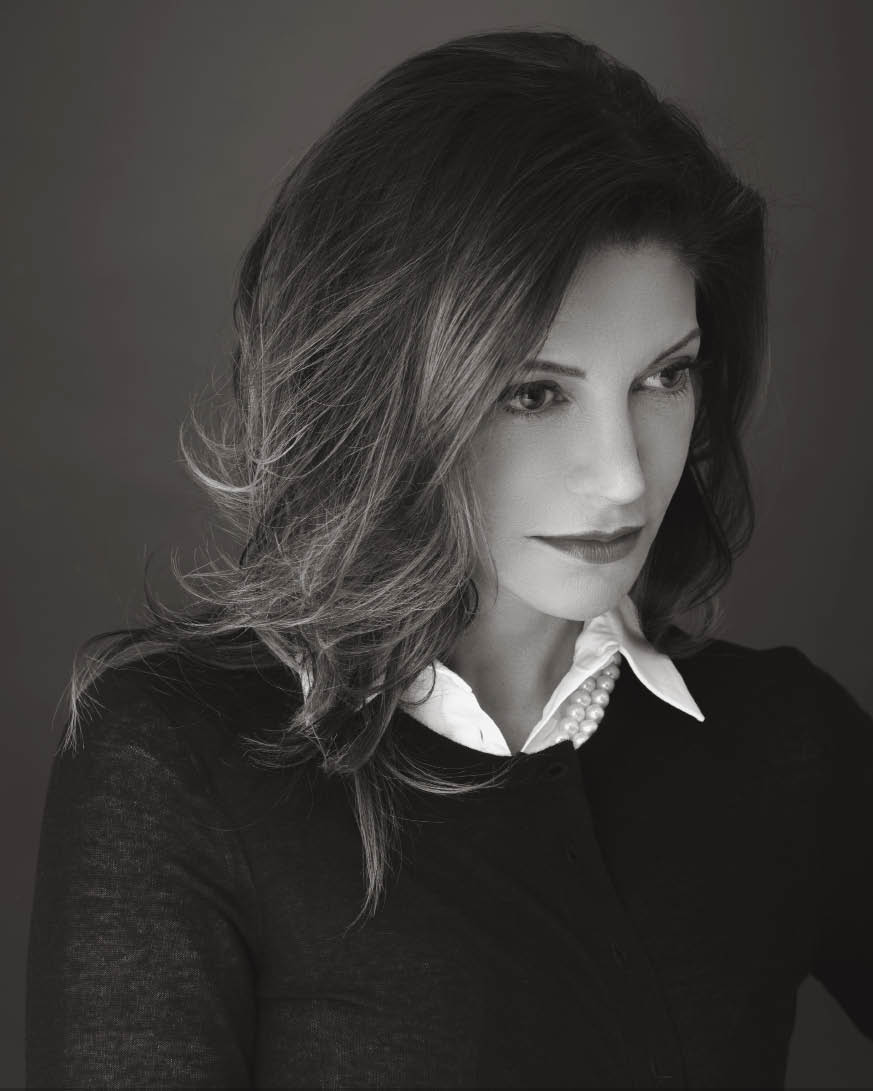In March 2014, as Nina Ansary ’89 was reworking her doctoral thesis about women in Iran into a book, she decided that every Monday, Wednesday, and Friday she would post a photograph and caption on social media of an accomplished Iranian woman, to gauge public interest in the subject. The response was overwhelming.
“While I was rewriting the book, a lot of the narrative that I infused into it came from social media engagement and followers,” Ansary told a packed room at The Diana Center last fall. “I decided to devote a whole chapter at the very end called ‘Exemplary Women of Iran,’ women who contributed throughout the centuries to empowering women. It’s really a way for the book to end as an homage to Iranian women throughout the centuries.”

The event, hosted by the Barnard Center for Research on Women and the Middle East Institute at Columbia, was a discussion about Ansary’s book, Jewels of Allah: The Untold Story of Women in Iran. In it, she explores the women’s movement in Iran, challenging the notion that since the Islamic Revolution in 1979, women have been kept in ignorance and darkness. In fact, women have an extraordinarily high literacy rate and represent more than half the students pursuing higher education.
The evening began with Ansary, a historian and human rights activist, discussing her research with one of her advisors and mentors, Richard Bulliet, Columbia professor of history and Middle East studies. Then, Barnard president Debora Spar joined the conversation and they took questions from the audience.
Among the issues raised was one discussed in the book—the veil that Iran’s Muslim women wear. Prior to the revolution, during the Pahlavi monarchy, women were encouraged to dress in a Western style and not to wear the chador , a long veil, or the hijab , a head covering. Schools were made coeducational. Traditional families did not embrace a rapid move toward the adoption of Western customs, nor did they accept the rights bestowed on girls and women.
“What we look at on the surface as seemingly liberal and liberated for many women ended up being restrictive,” Ansary said. “When [Ayatollah] Khomeini initially came to power and mandated the veil, it was a welcome alternative for many women initially, who actually felt more comfortable coming out of seclusion.”
A return to the veil and to single-sex education meant that more families sent their daughters to school. Ansary said studies done in Europe and North America more than a decade after Khomeini’s rise to power showed how empowering single-sex education was for girls at the primary and secondary levels.
In the course of her research, Ansary, who was born in Iran and whose family left before the revolution, discovered that the Western educational infrastructure the Pahlavi monarchy had put in place with the help of the U.S. had not been dismantled. Elementary-school textbooks were kept virtually intact, with only a limited amount of Islamization.
“That is one of the reasons that you have an empowered generation of women that were raised and reared in this Western education infrastructure,” Ansary said. “Part of my work centered on why this new generation that has really been cut off from the West—because this regime of hardliners are adverse to the West—subscribes to a Western mentality despite an oppressive atmosphere.”
Ansary also noted that it was incorrect to look at the regime in Iran as one entity. There are actually different voices, some more progressive than others. Even in the early days following the Islamic Revolution, Western texts were translated into Persian. As time went on, even feminist publications became available, and women were exposed to the writing of Western feminists such as Simone de Beauvoir and Virginia Woolf. Ansary said that Iranian women saw commonalities with Western women, who were also constrained by patriarchal boundaries.
Ansary also reinforced the idea that gender inequality is not unique to Iran. She said that more than 100 countries around the globe have at least one or more laws that discriminate on the basis of gender. In more than 32 countries women cannot apply for a passports the same way men can. In more than 18 countries, a husband can prohibit his wife from taking a job he feels interferes with family.
Spar asked what role technology plays in giving women in Iran a voice, and Ansary answered that she would not have even been able to get her work off the ground if not for social media.
“The borderless nature of social media, specifically Twitter, even though it has a 140-character limitation, is priceless,” said Ansary. “I have about 4,000 followers from Iran.… This has been a phenomenal way for me to communicate with people there.”
Since establishing her social media presence in March 2014, Ansary, who has over 60,000 Twitter followers (@drninaansary) and over 150,000 on Facebook, has been named one of the top social influencers in Iran. She also writes for outlets such as The Daily Beast , Al Jazeera , and The Huffington Post .
“The best part of my day is having conversations with these women in Iran,” she said, adding that she also enjoys connecting to other women in a global context. “Social media, if used properly and in the right context, has a powerful connecting force,” she said. “It amplifies the voices of so many women, so many oppressed women, so many women who want to be given a voice.”
While oppressive regimes ban publications in some countries, there is an underground feminist movement in Iran. Ansary said Iranian women have shown they are resilient, and even though they pay a high price for their activism, including, at times, imprisonment, they are not dissuaded.
“This is a grassroots movement,” Ansary said. “It is fueled by women from all walks of life. They are continuously breaking barriers.” •
